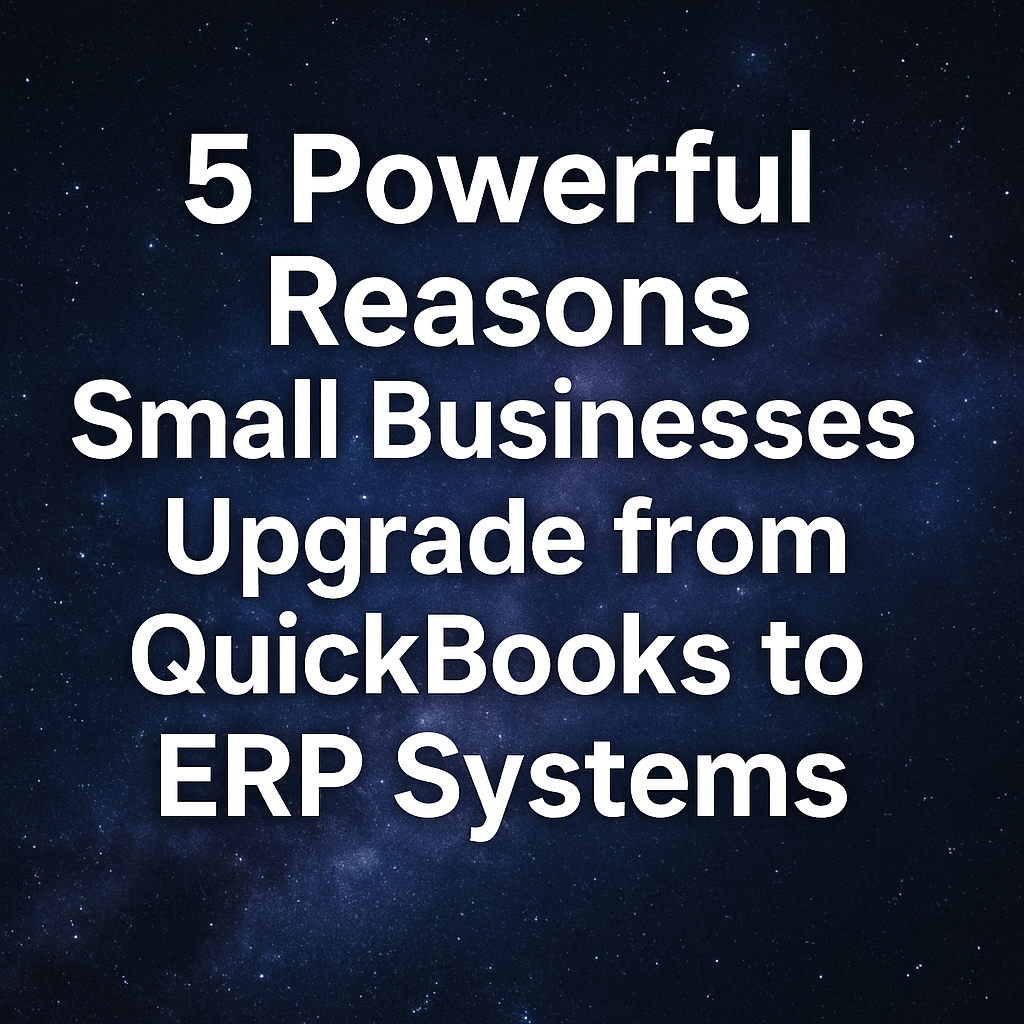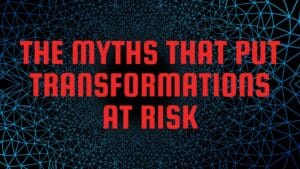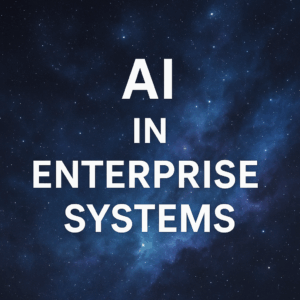Small businesses are the engine of innovation, but many eventually hit a point where their foundational tools—like QuickBooks, spreadsheets, or homegrown systems—no longer support their growth.
If you’re at that inflection point, you’re not alone. At Third Stage Consulting, we frequently help small businesses navigate the decision to implement ERP software. But what sparks this shift? What conditions cause a company to move beyond the tools that got them started?
In this post, we’ll explore:
- Why small businesses decide to upgrade to ERP
- The challenges they face with legacy tools
- What defines a “small business” in ERP terms
- How to know if now is the right time
Table of Contents
ToggleWhy Do Small Businesses Turn to ERP?
According to Third Stage transformation experts, most small businesses come to us when they hit a scaling roadblock. The systems that once fueled growth—like QuickBooks or Excel—become the very tools holding them back.
“The manual processes that gave them success early on start becoming a crutch,” explains Nate, one of Third Stage’s consultants.
“At a certain point, companies realize it’s time to become a technology-enabled business, not just a growing one.”
This moment often aligns with the following scenarios:
- Rapid growth has outpaced operational capacity
- Too much time is spent reconciling spreadsheets or systems
- Customer expectations (like order tracking or delivery updates) can’t be met
- The company is adding locations, products, or services that current systems can’t handle
If this sounds familiar, your business might be approaching the ERP tipping point.
The Most Common Starting Point: QuickBooks + Chaos
The majority of small businesses we work with are running on:
- QuickBooks or similar accounting tools
- Dozens of Excel spreadsheets
- Segmented systems that don’t talk to each other
- Occasionally, homegrown tools built internally over time
“QuickBooks does a great job getting companies to a certain stage,” says Jordy, another ERP advisor.
“But as customer demands increase—especially around speed and transparency—even small companies are expected to operate like Amazon.”
That means real-time inventory visibility, centralized order management, and accurate forecasting. Fragmented tools can’t deliver that.
What Triggers the Shift to ERP?
Some of the most common signals include:
- Manual workarounds are growing—not shrinking
- You’re duplicating data entry across platforms
- There’s no single source of truth for key metrics
- You’re losing deals or frustrating customers due to lack of visibility
“They’re growing, but their growth is creating operational chaos,” says Nate.
“They need to centralize and automate in order to keep scaling.”
This is where ERP comes in. A modern ERP platform can unify finance, inventory, sales, and operations into one centralized system—making it easier to grow without adding headcount or complexity.
How Small Is a Small Business, Really?
Here’s the thing: “small business” is a flexible term. We asked our team how they define it, and the answer was: it depends.
Generally, we consider small businesses to fall in the range of:
- 10 to 100 employees
- $10 million to $100 million in annual revenue
But there are exceptions.
“We’ve worked with 10-person companies doing $200 million in revenue,” says Eric Kimberling, CEO of Third Stage.
“It’s not just about revenue—it’s about systems maturity, operational complexity, and internal readiness.”
Quick Tip:
If your business is under $75 million, you may qualify for our free small business ERP readiness assessment. This tool helps determine if you’re truly ready to make the leap—and what your roadmap should look like.
When Is the Right Time to Upgrade from QuickBooks?
There’s no universal answer, but common signs it’s time include:
- You’ve outgrown manual accounting workflows
- You need to track inventory, sales, and operations across locations
- You’re preparing for M&A, funding, or rapid expansion
- You spend more time managing data than using it
Ultimately, the question is:
Is your current system helping you grow—or slowing you down?
If the latter, ERP isn’t a luxury. It’s a necessity.
What’s Next? Start with a Roadmap
ERP implementation is a big move. But it doesn’t start with software—it starts with a clear roadmap. At Third Stage, we guide clients through:
- Current-state assessments
- Business process mapping
- Software evaluation
- Change management strategies
Our goal is to help you find the right system at the right time—and build the right foundation for growth.
📥 Get started with your free small business ERP assessment here.
🎥 Watch More on YouTube
Want to learn from other small businesses going through digital transformation?
Subscribe to Third Stage on YouTube for practical advice, expert breakdowns, and real-world case studies.






